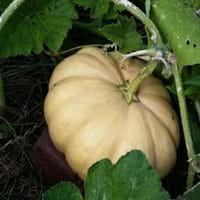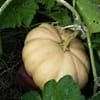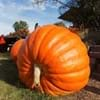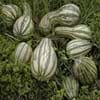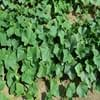Life Span
Annual and Perennial
Biennial
Type
Vegetable, Vines
Perennial
Origin
North America, Mexico, Central America
Texas
Types
Winter squash, Field pumpkin, Crookneck pumpkin
Not available
Habitat
close to waterfalls, Riverbanks, Warmer regions, waterways, Wet ground
Forests, meadows, Pastures, Prairies, savannahs, Woodland edges
USDA Hardiness Zone
1-6
8-10
Sunset Zone
A1, A2, A3, H1, H2, 1a, 1b, 2a, 2b, 3a, 3b, 4, 5, 6, 7, 8, 9, 10, 11, 12, 13, 14, 15, 16, 17, 18, 19, 20, 21, 22, 23, 24
H1, 8, 9, 12, 13, 14, 15, 16, 17, 18, 19, 20, 21, 22, 23, 24
Habit
Vining/Climbing
Upright/Erect
Flower Color
Yellow
White, Lemon yellow, Light Pink
Flower Color Modifier
Bicolor
Bicolor
Fruit Color
Orange Red, Yellow Brown
Tan
Leaf Color in Spring
Green, Light Green
Green
Leaf Color in Summer
Green, Dark Green
Green
Leaf Color in Fall
Green, Dark Green
Not Available
Leaf Color in Winter
Not Available
Light Green
Leaf Shape
Heart-shaped
Alternate
Plant Season
Early Winter
Spring, Summer
Sunlight
Full Sun
Full Sun, Partial Sun
Growth Rate
Very Fast
Fast
Type of Soil
Well drained
Loam, Sand
The pH of Soil
Neutral
Neutral, Alkaline
Soil Drainage
Well drained
Well drained
Bloom Time
Summer
Early Spring, Spring, Late Spring, Early Summer, Late Winter
Tolerances
Drought
Drought
Where to Plant?
Ground
Container, Ground, Pot
How to Plant?
Seedlings
Seedlings
Plant Maintenance
Medium
Medium
Watering Requirements
Keep the ground moist but not water-logged, Requires regular watering, Requires watering in the growing season
Average Water Needs, Do Not over Water, Keep the Soil well drained, Requires regular watering
In Summer
Lots of watering
Lots of watering
In Spring
Moderate
Moderate
In Winter
Average Water
Average Water
Soil pH
Neutral
Neutral, Alkaline
Soil Type
Loam
Loam, Sand
Soil Drainage Capacity
Well drained
Well drained
Sun Exposure
Full Sun
Full Sun, Partial Sun
Pruning
prune leaves so as to circulate fresh air, Remove Vines
Remove damaged leaves, Remove dead branches, Remove dead leaves
Fertilizers
Apply 5-10-5 amounts, Nitrogen, Phosphorous, Potassium
All-Purpose Liquid Fertilizer
Pests and Diseases
Gray leaf blight, Scab
Pests and diseases free, Red blotch
Plant Tolerance
Salt and Soil Compaction
Drought
Flower Petal Number
Single
Single
Foliage Texture
Coarse
Medium
Foliage Sheen
Matte
Matte
Attracts
Beetles, Bugs
Bugs, Butterflies, Insects
Allergy
Asthma, breathing problems, Itchiness, Swelling in the face
Abdominal pain, Anxiety, Inflammation, Low blood pressure
Aesthetic Uses
Not Used For Aesthetic Purpose
Beautification, Decorating walls, Hanging Basket, Showy Purposes, Used as an interior landscaping species, Used for decorating walls, fences, gates, hedges, etc.
Beauty Benefits
Good for skin and hair, Skin cleanser, Skin Problems
Skin irritation, Skin Problems
Environmental Uses
Air purification
Air purification
Medicinal Uses
Anemia, Antibacterial, anti-cancer, cholesterol-lowering, High blood pressure, Immunity, Prevention of convulsion, Regulates Blood Sugar
Eczema, Menstrual Cramps, Menstrual Disorders
Part of Plant Used
Fruits, Leaves, Seeds
Flowers, Root, Seeds, Stem
Other Uses
Used As Food, Used as Ornamental plant, Used for its medicinal properties, Used in salads
Beneficial species for attracting pollinators, deer resistant, Edible seed
Used As Indoor Plant
Yes
Yes
Used As Outdoor Plant
Yes
Yes
Garden Design
Edible, Herb / Vegetable, Vine
Mixed Border, Rock Garden, Wall, Wildflower
Botanical Name
CUCURBITA moschata 'Long Island Cheese'
OENOTHERA mexicana
Common Name
Long Island Cheese Pumpkin, Winter Pumpkin
pinkladies, pink evening primrose, showy evening primrose, Mexican primrose, and amapola.
In Hindi
चीनी कद्दू
Mexican primrose
In German
chinesisch Kürbis
Rosa Nachtkerze
In French
potiron chinois
Mexican primrose
In Spanish
calabaza china
Primrose mexicana
In Greek
κινέζικο κολοκύθα
Μεξικού Primrose
In Portuguese
abóbora chinês
Mexican Primrose
In Polish
Chiński dyni
Mexican Primrose
In Latin
Chinese cucurbita
Mexicanus Primrose
Phylum
Magnoliophyta
Tracheophyta
Class
Magnoliopsida
Magnoliopsida
Family
Cucurbitaceae
Onagraceae
Genus
Cucurbita
Oenothera
Clade
Angiosperms, Eudicots, Rosids
Angiosperms, Eudicots, Rosids
Tribe
Cucurbiteae
Onagreae
Subfamily
Cucurbitoideae
Onagroideae
Importance of Cheese Pumpkin and Mexican primrose
Want to have the most appropriate plant for your garden? You might want to know the importance of Cheese Pumpkin and Mexican primrose. Basically, these two plants vary in many aspects. Compare Cheese Pumpkin and Mexican primrose as they differ in many characteristics such as their life, care, benefits, facts, etc. Every gardener must at least have the slightest clue about the plants he wants to plant in his garden. Compare their benefits, which differ in many ways like facts and uses. The medicinal use of Cheese Pumpkin is Anemia, Antibacterial, anti-cancer, cholesterol-lowering, High blood pressure, Immunity, Prevention of convulsion and Regulates Blood Sugar whereas of Mexican primrose is Eczema, Menstrual Cramps and Menstrual Disorders. Cheese Pumpkin has beauty benefits as follows: Good for skin and hair, Skin cleanser and Skin Problems while Mexican primrose has beauty benefits as follows: Good for skin and hair, Skin cleanser and Skin Problems.
Compare Facts of Cheese Pumpkin vs Mexican primrose
How to choose the best garden plant for your garden depending upon its facts? Here garden plant comparison will help you to solve this query. Compare the facts of Cheese Pumpkin vs Mexican primrose and know which one to choose. As garden plants have benefits and other uses, allergy is also a major drawback of plants for some people. Allergic reactions of Cheese Pumpkin are Asthma, breathing problems, Itchiness and Swelling in the face whereas of Mexican primrose have Abdominal pain, Anxiety, Inflammation and Low blood pressure respectively. Having a fruit bearing plant in your garden can be a plus point of your garden. Cheese Pumpkin has showy fruits and Mexican primrose has no showy fruits. Also Cheese Pumpkin is not flowering and Mexican primrose is flowering. You can compare Cheese Pumpkin and Mexican primrose facts and facts of other plants too.
